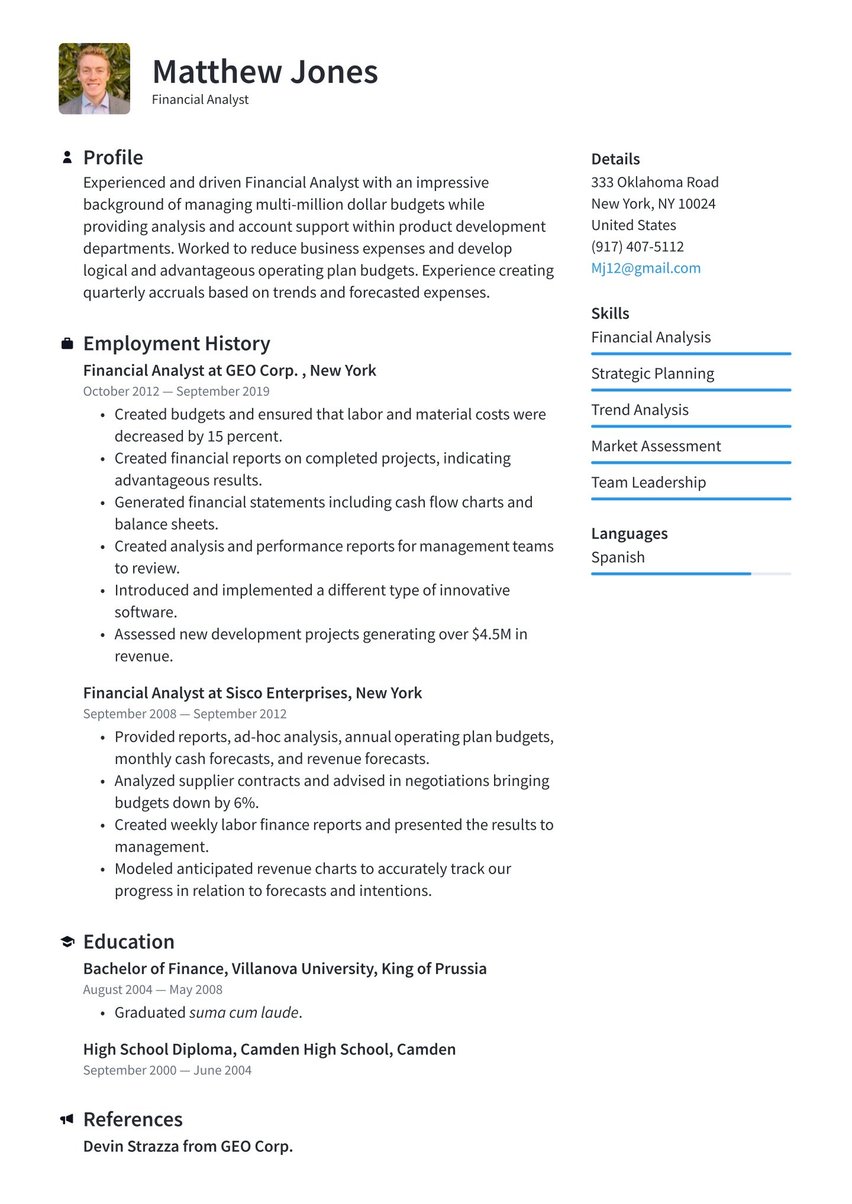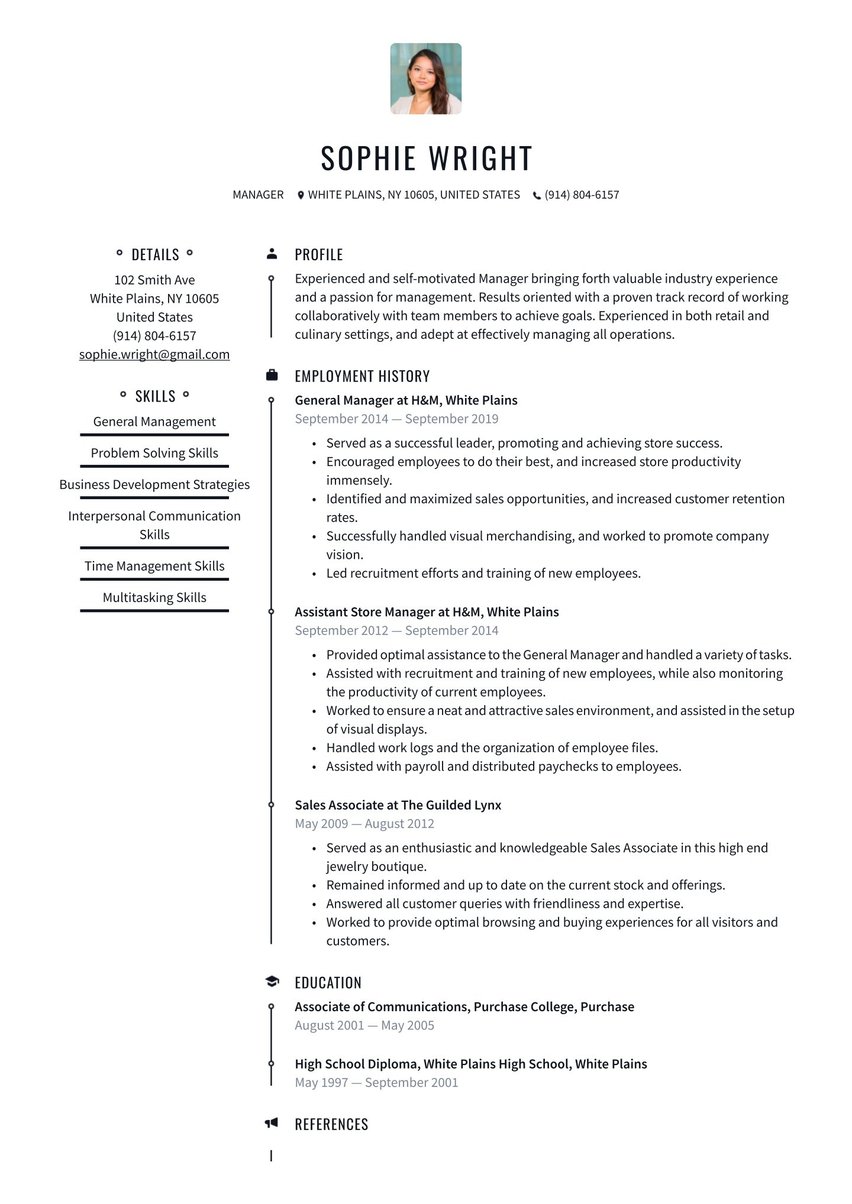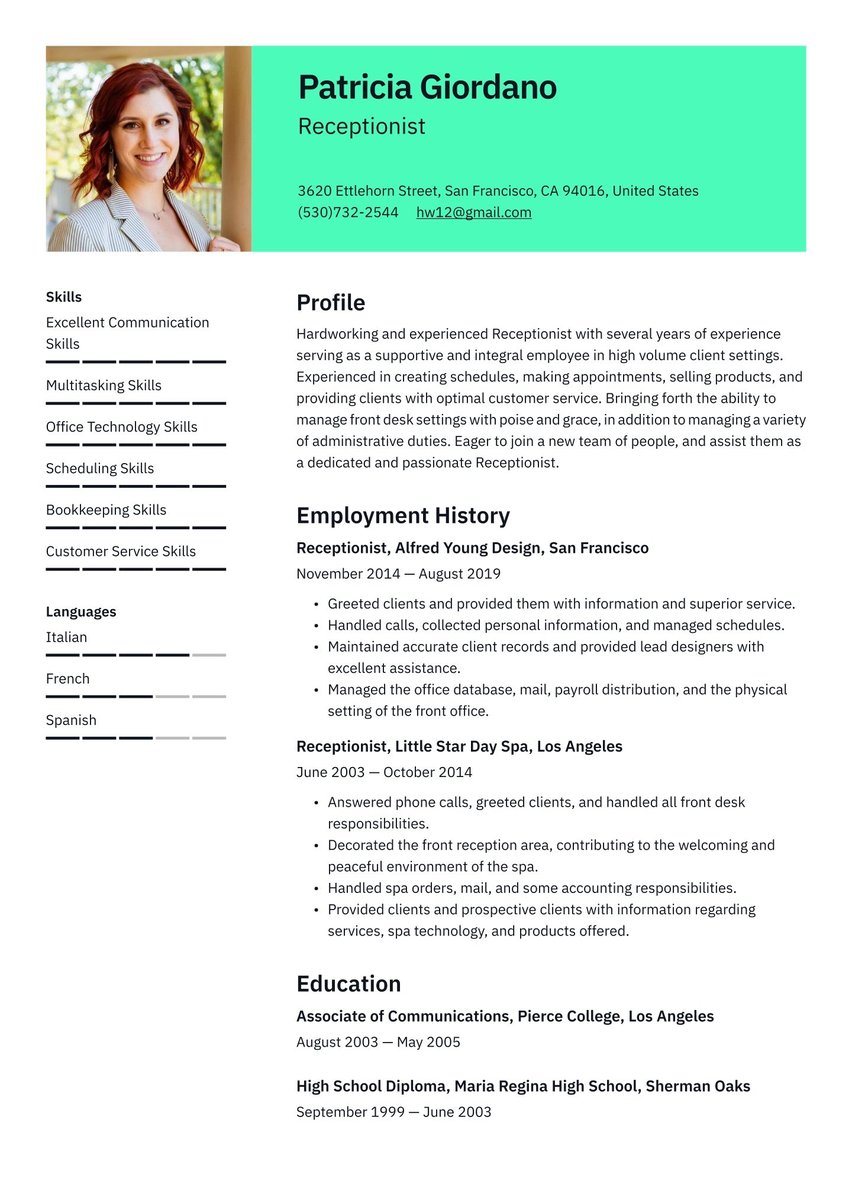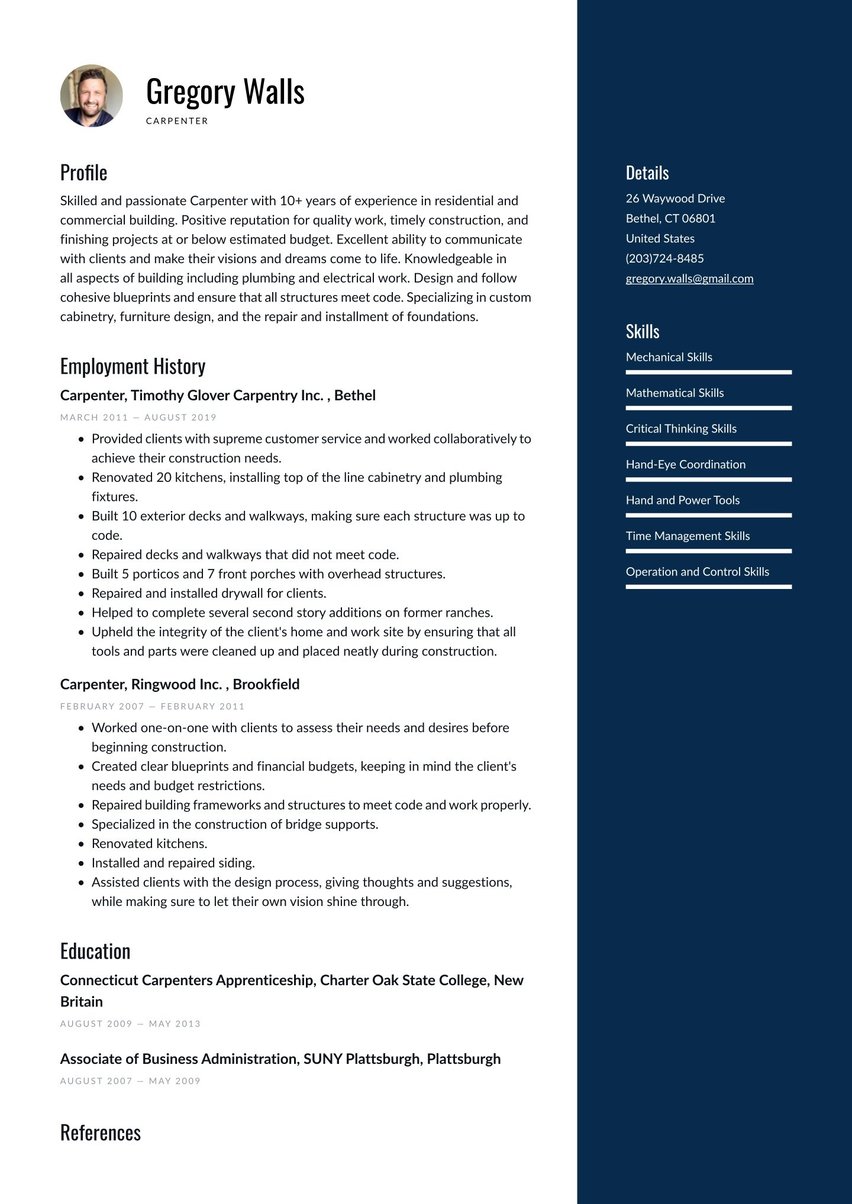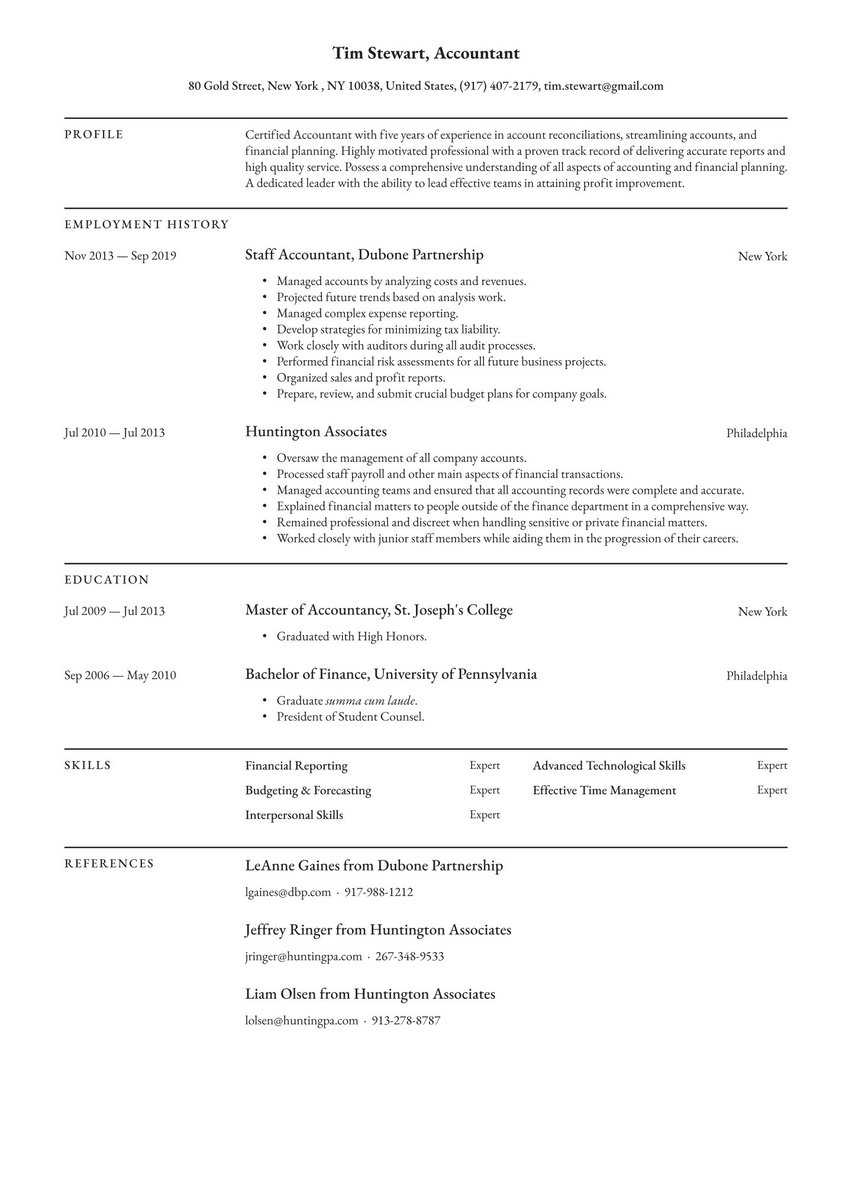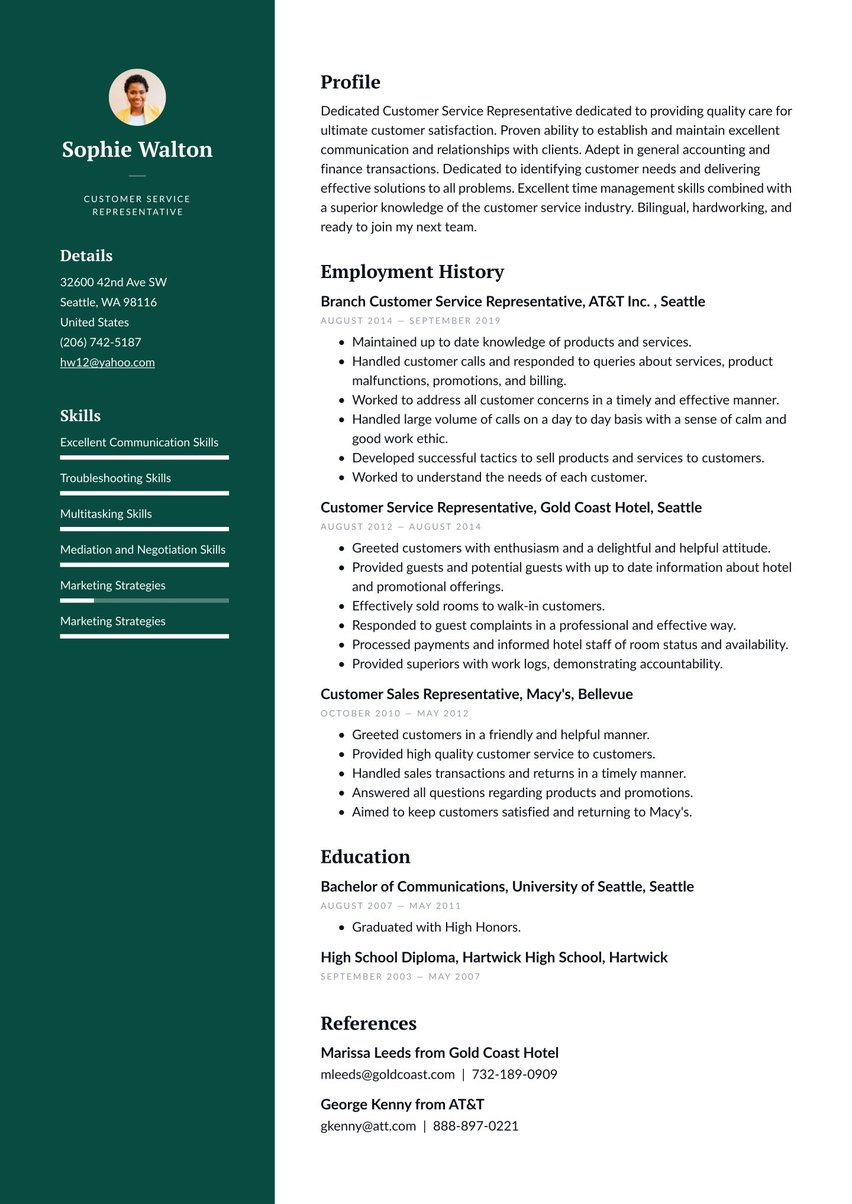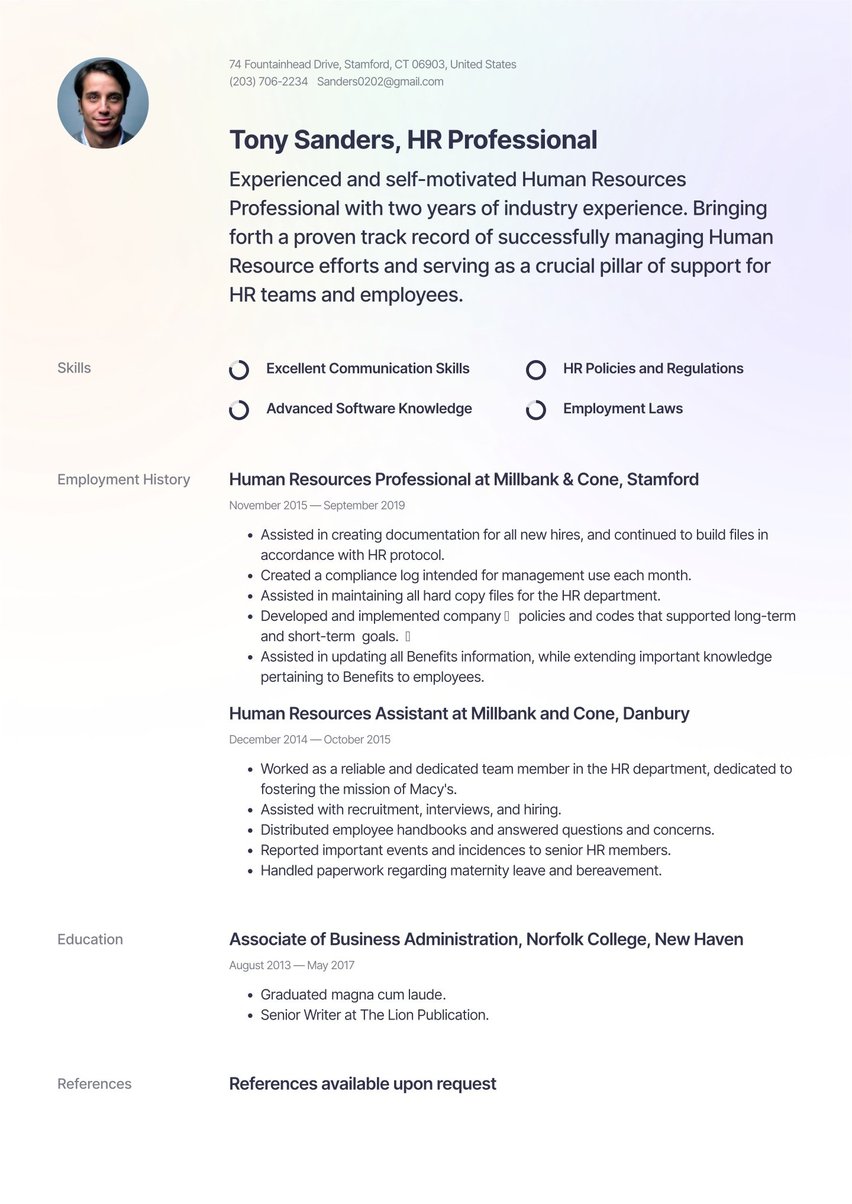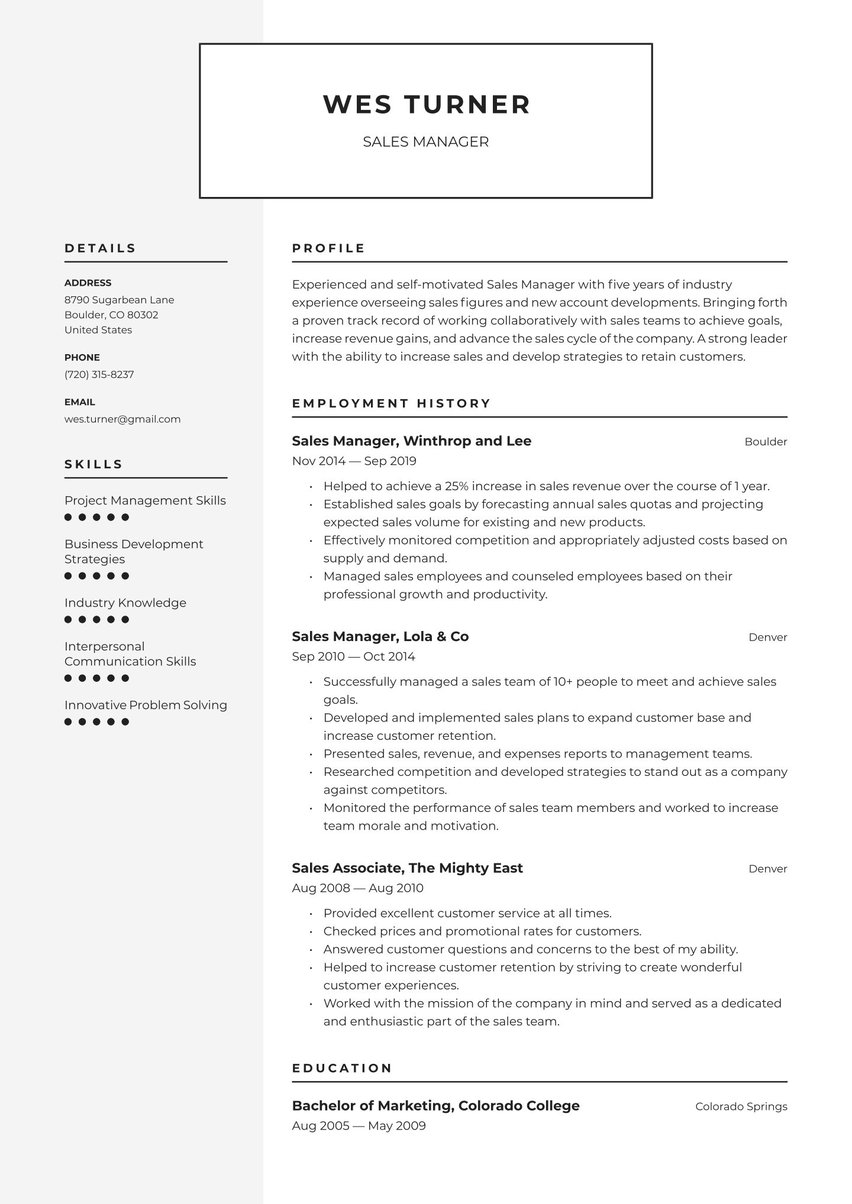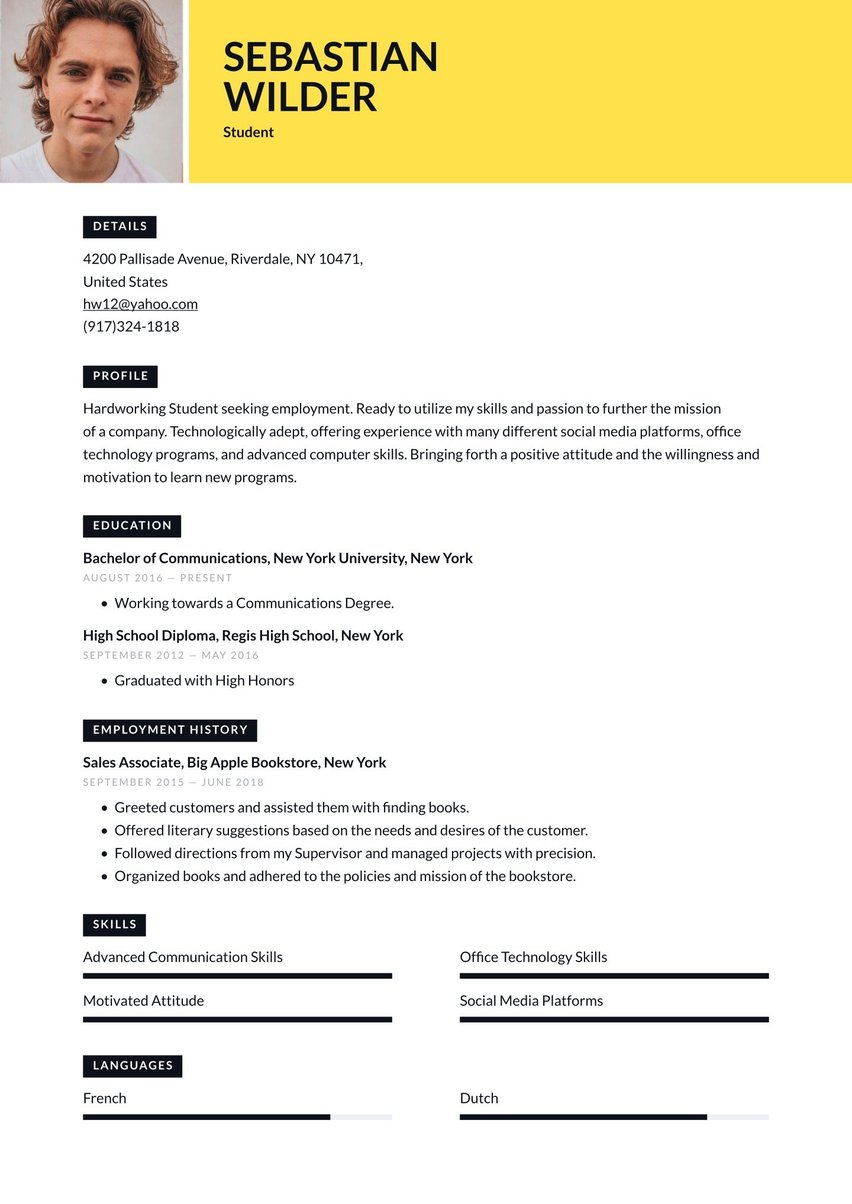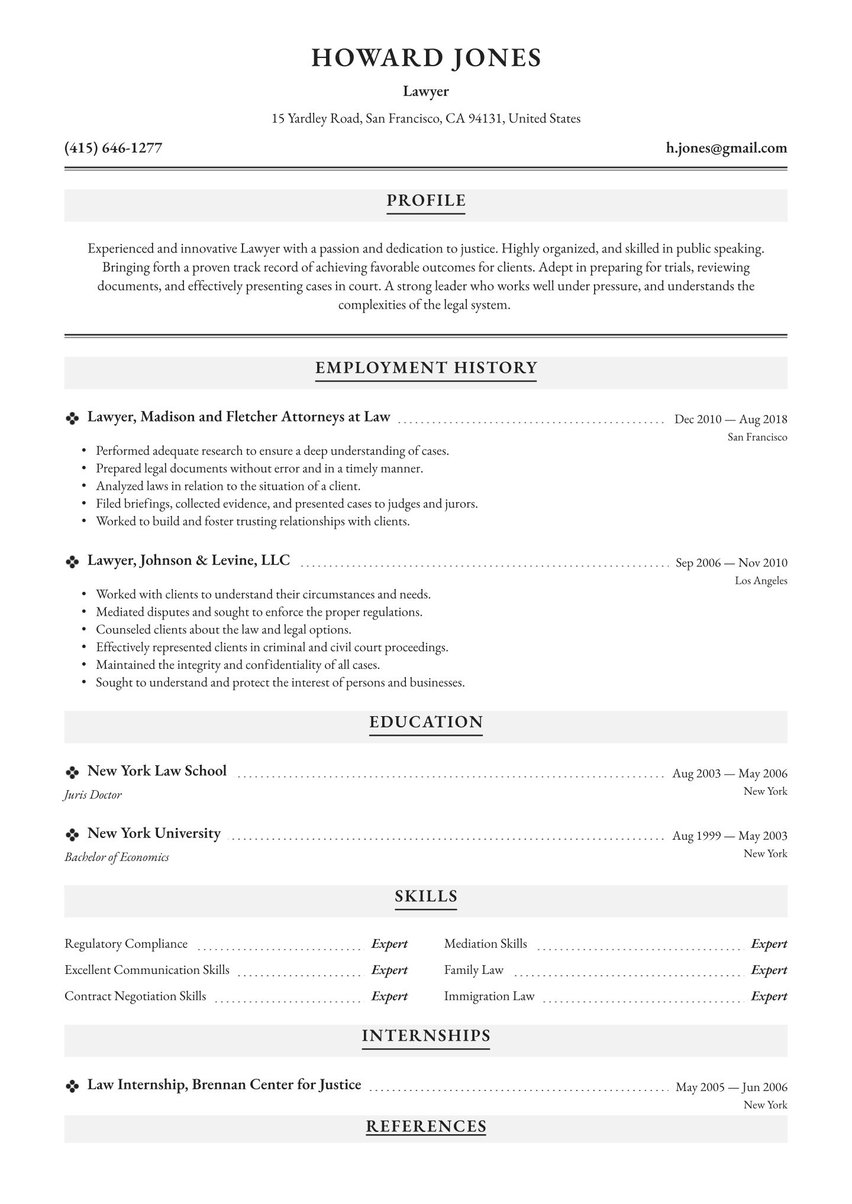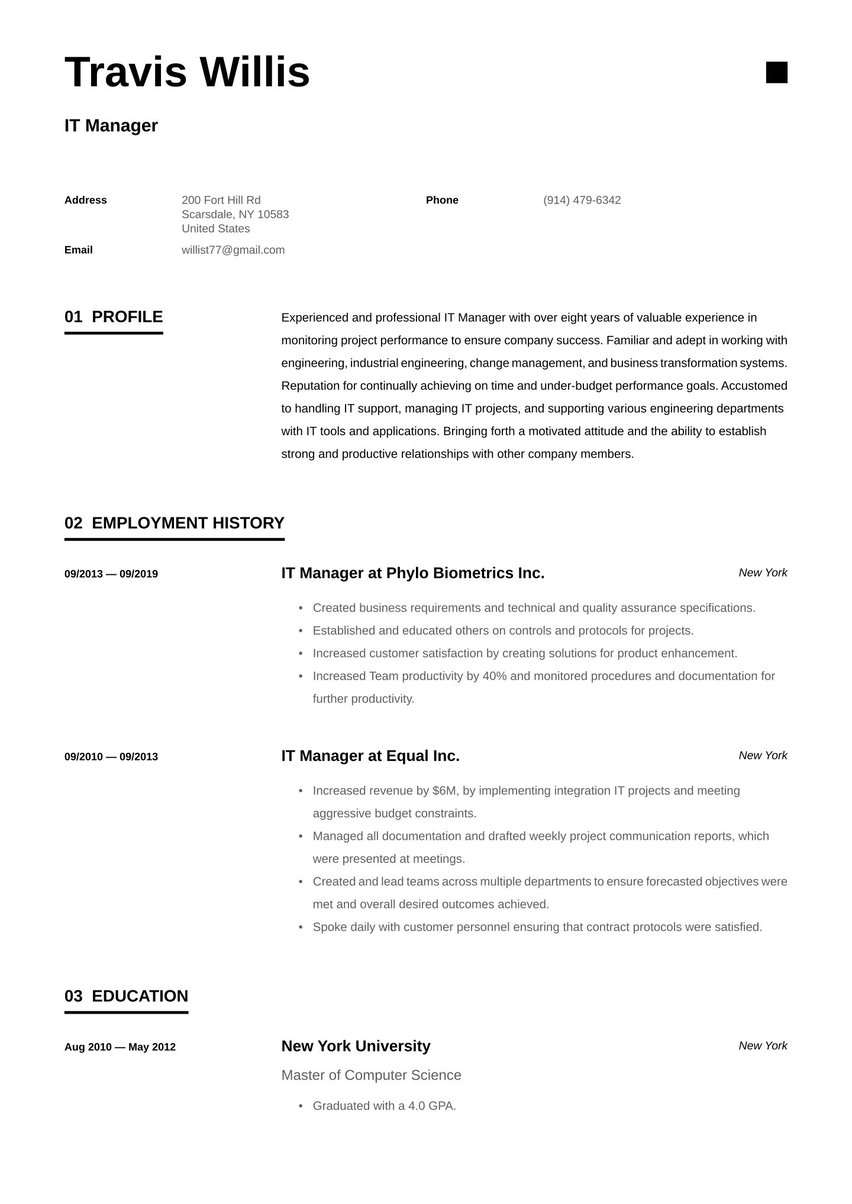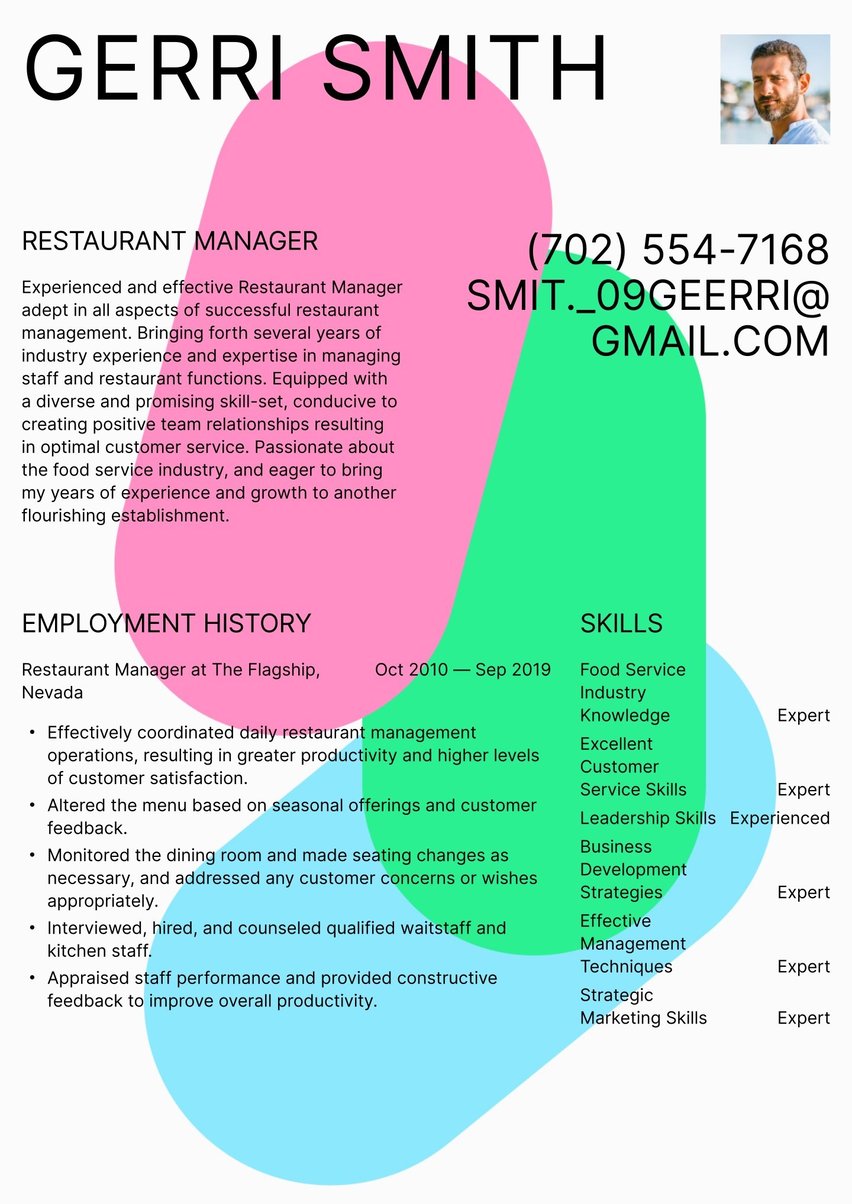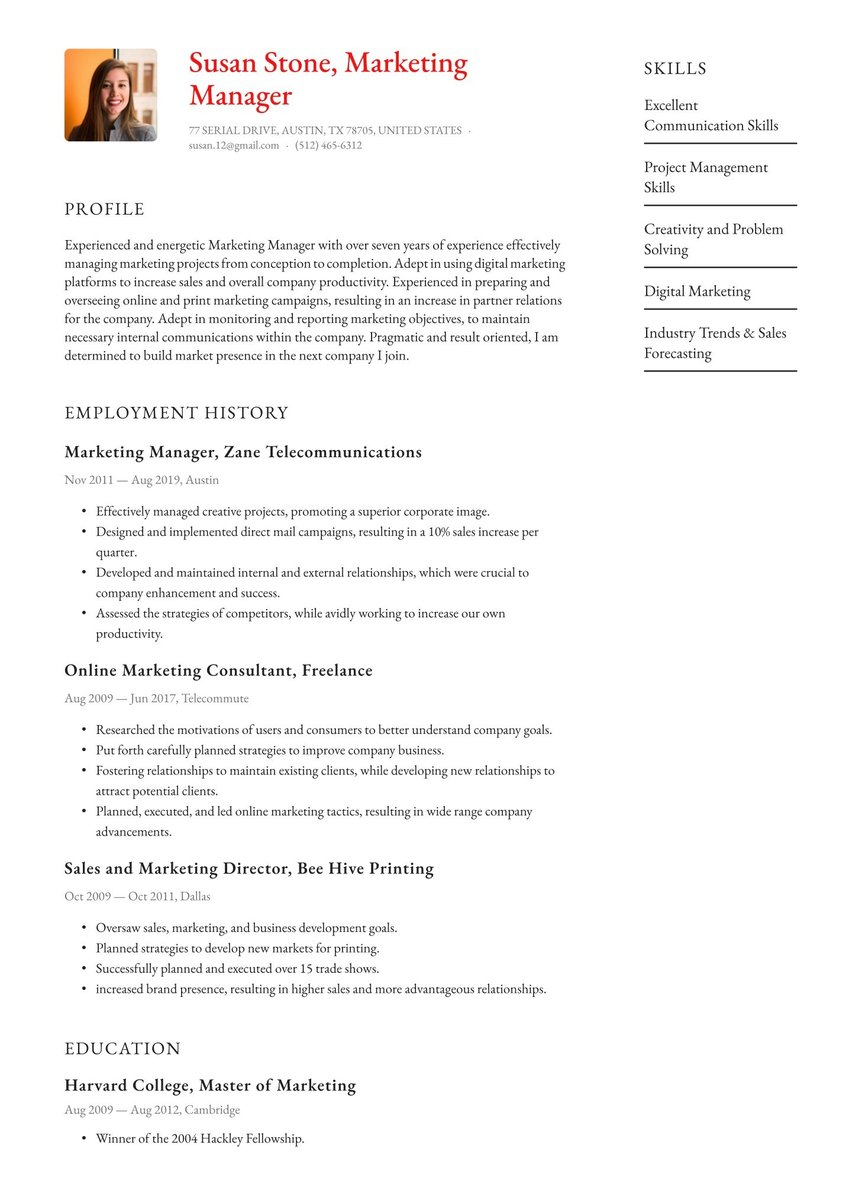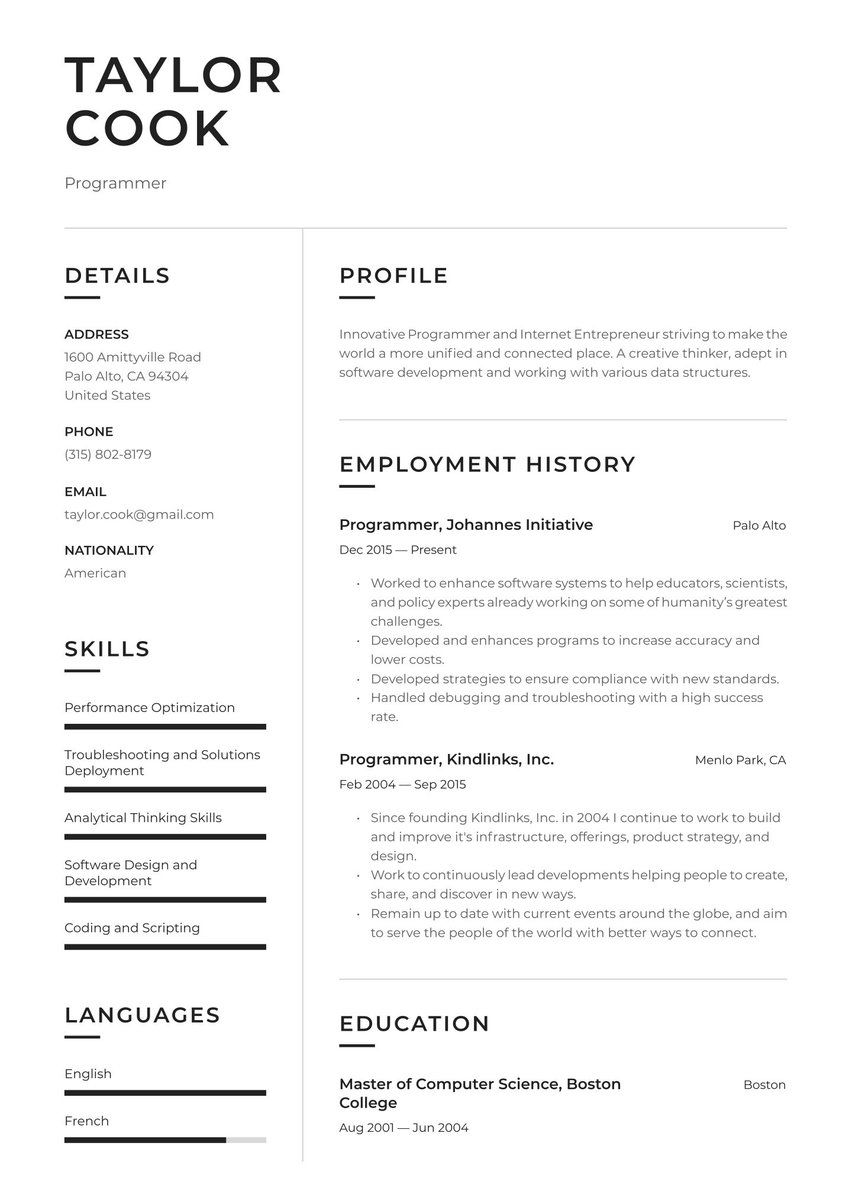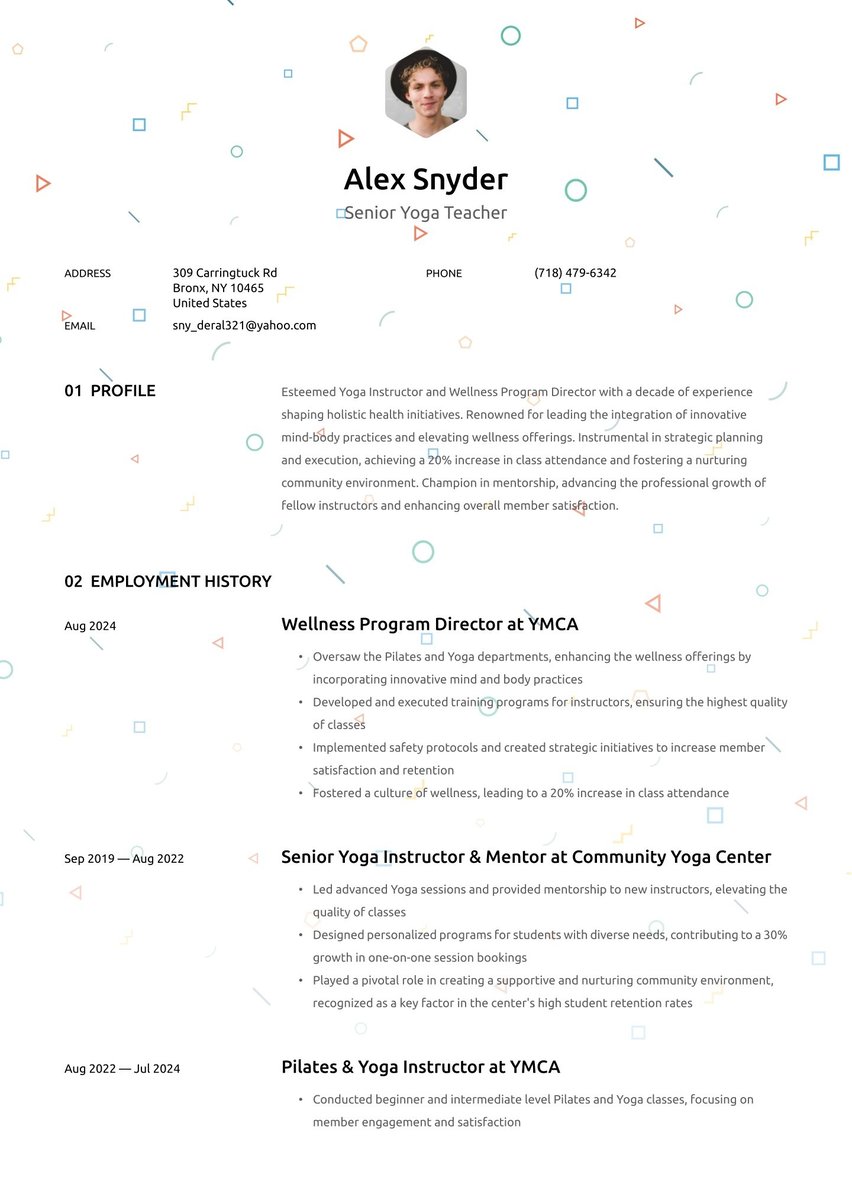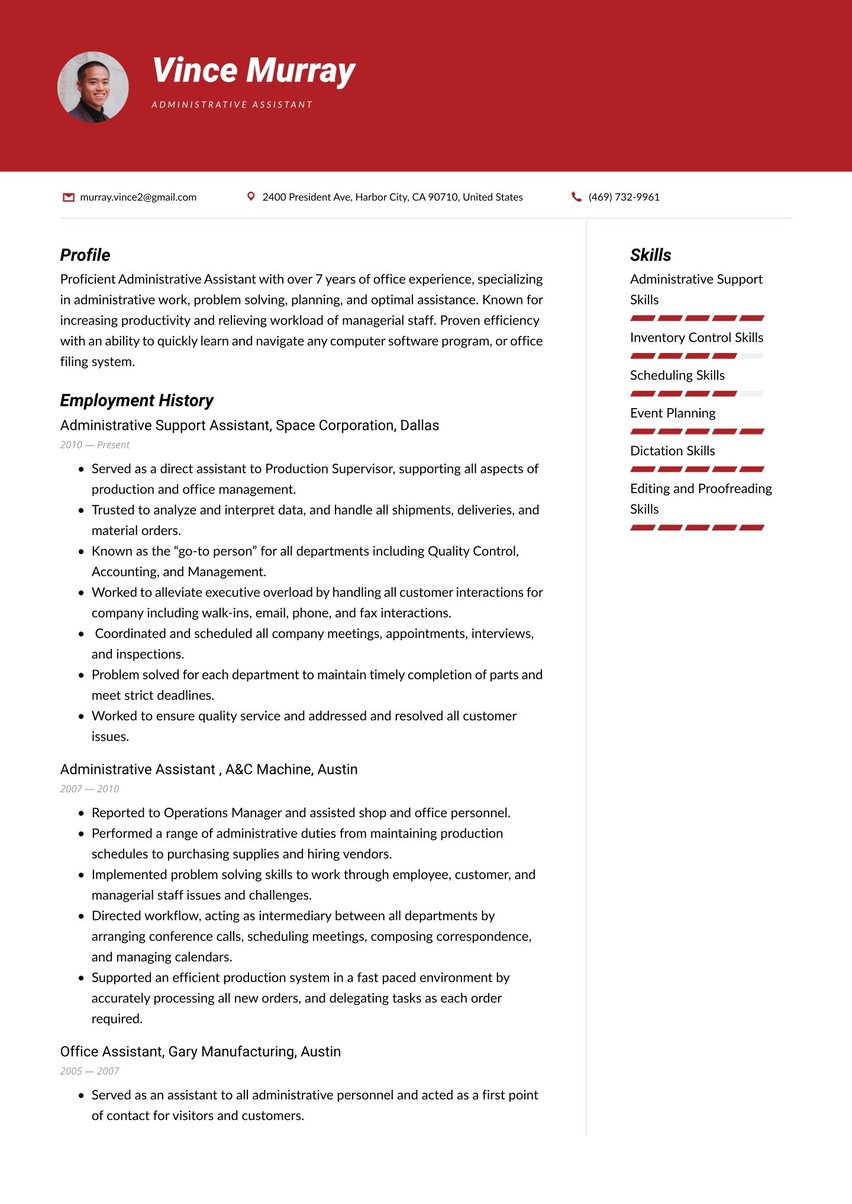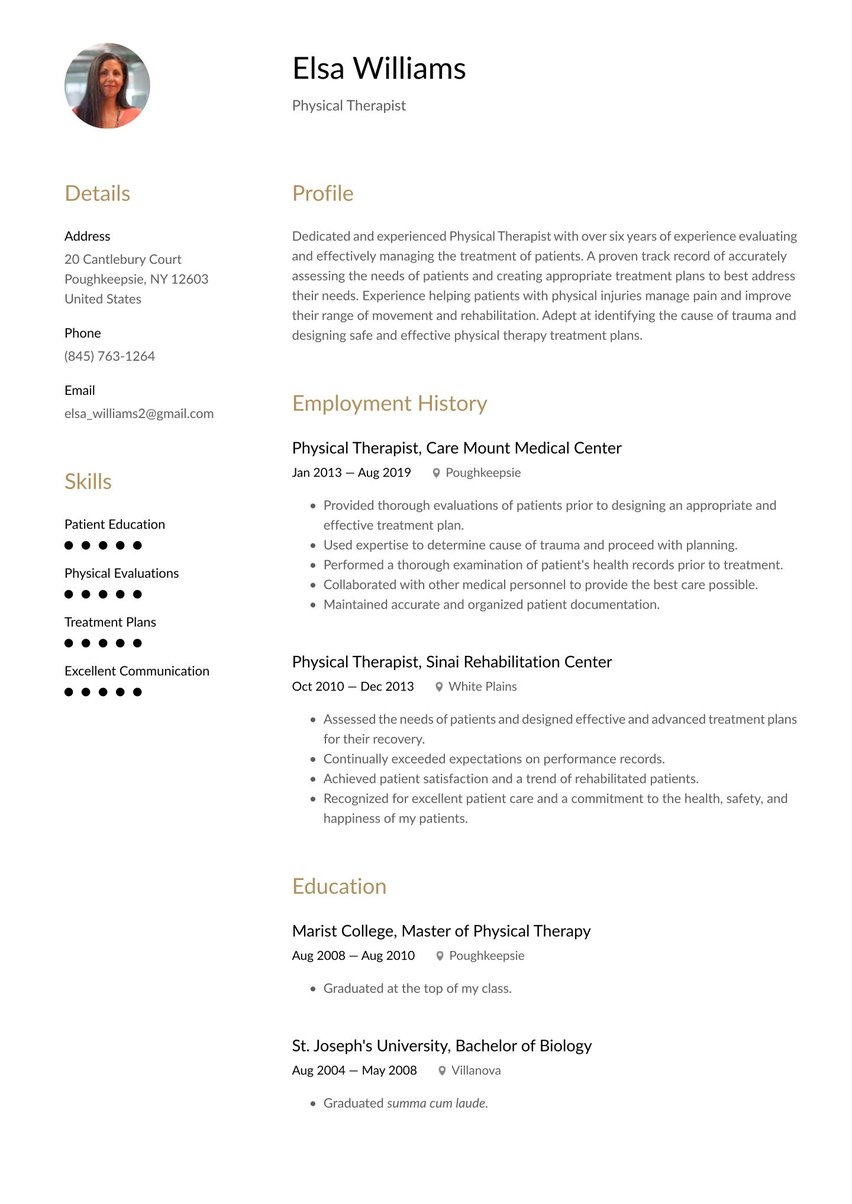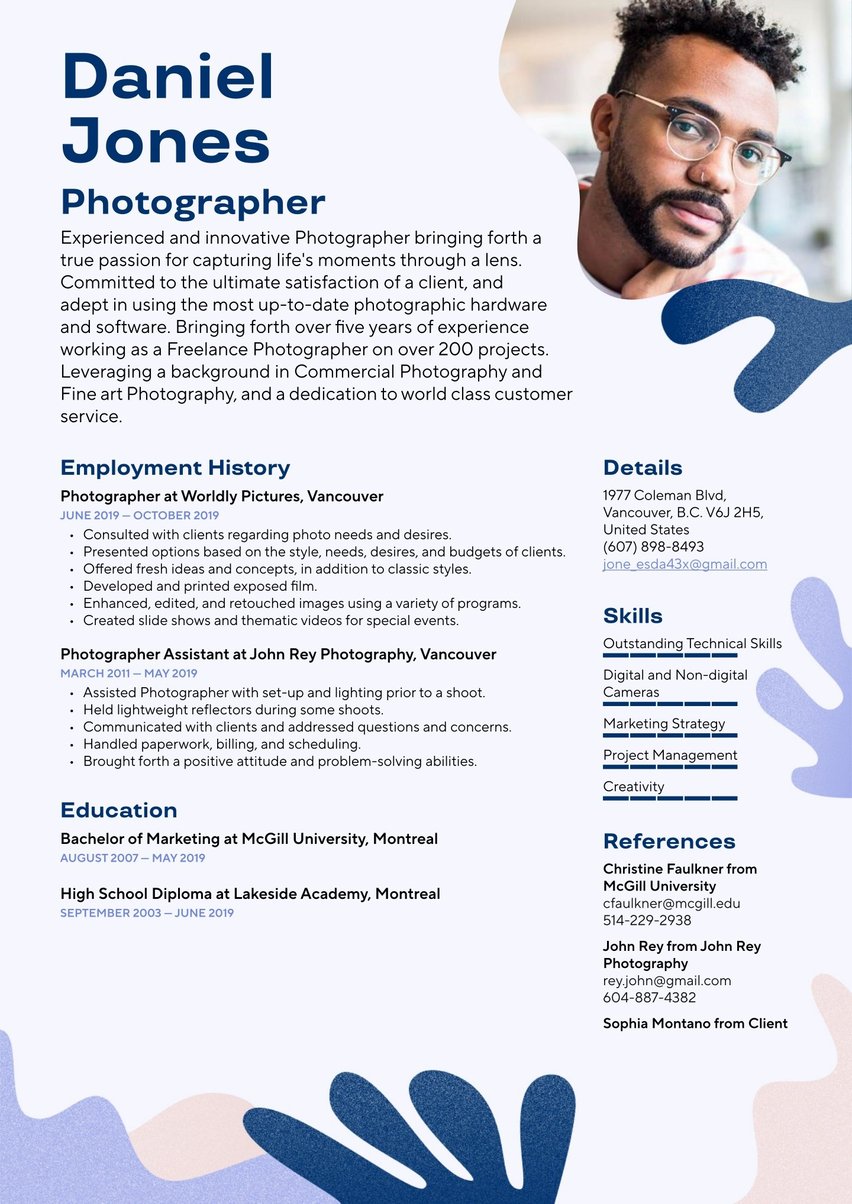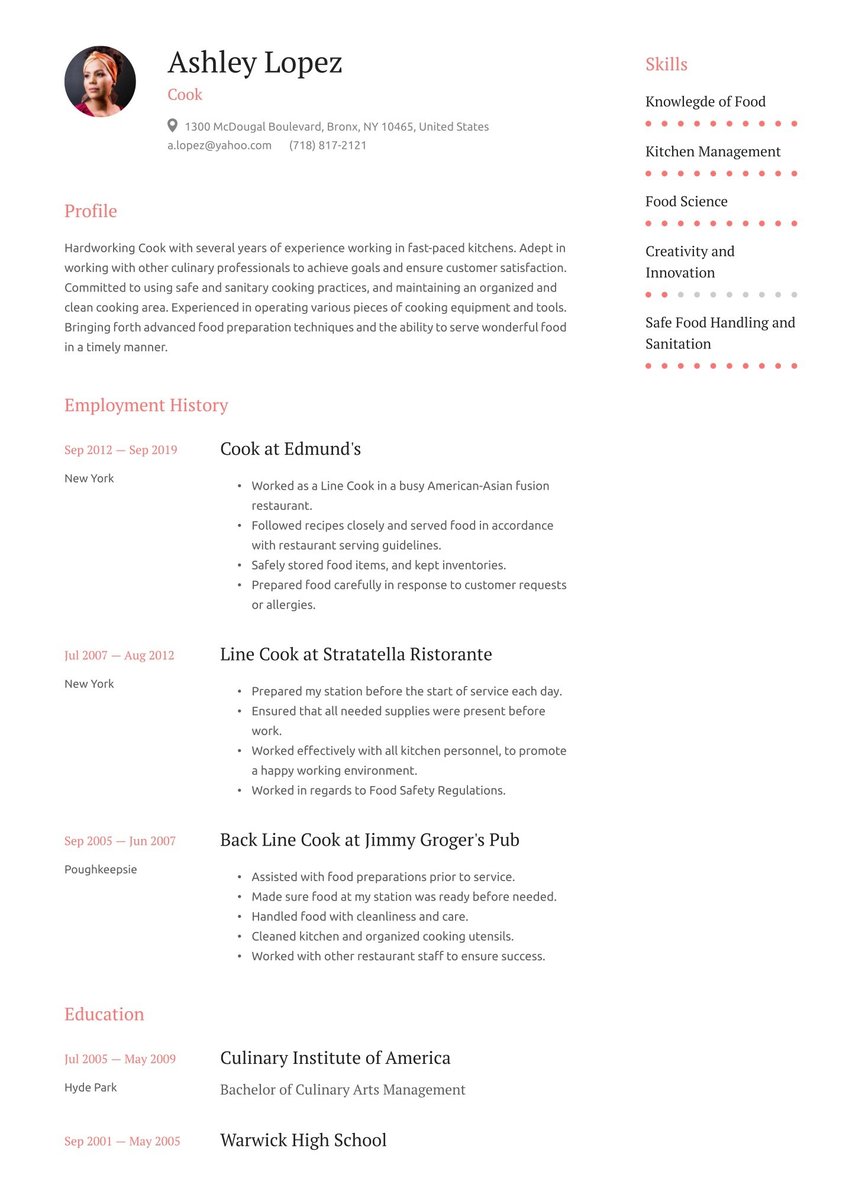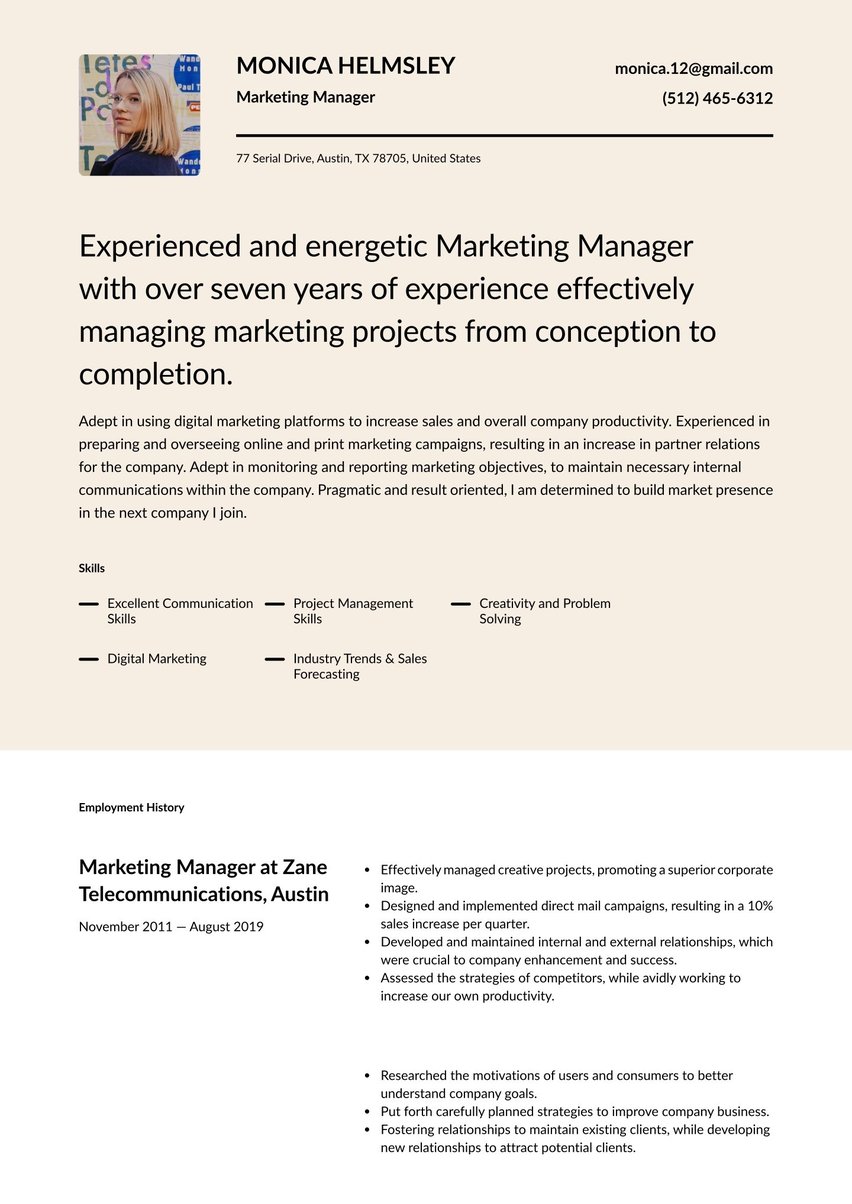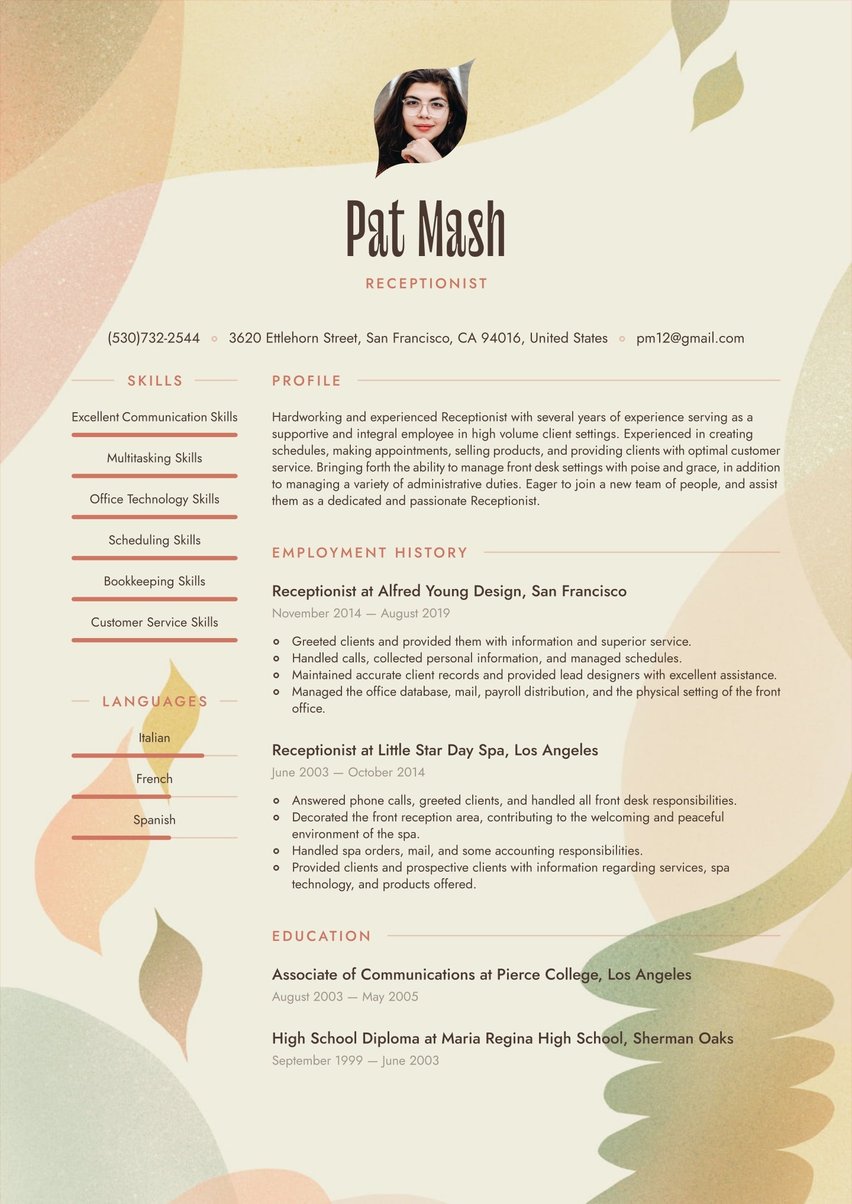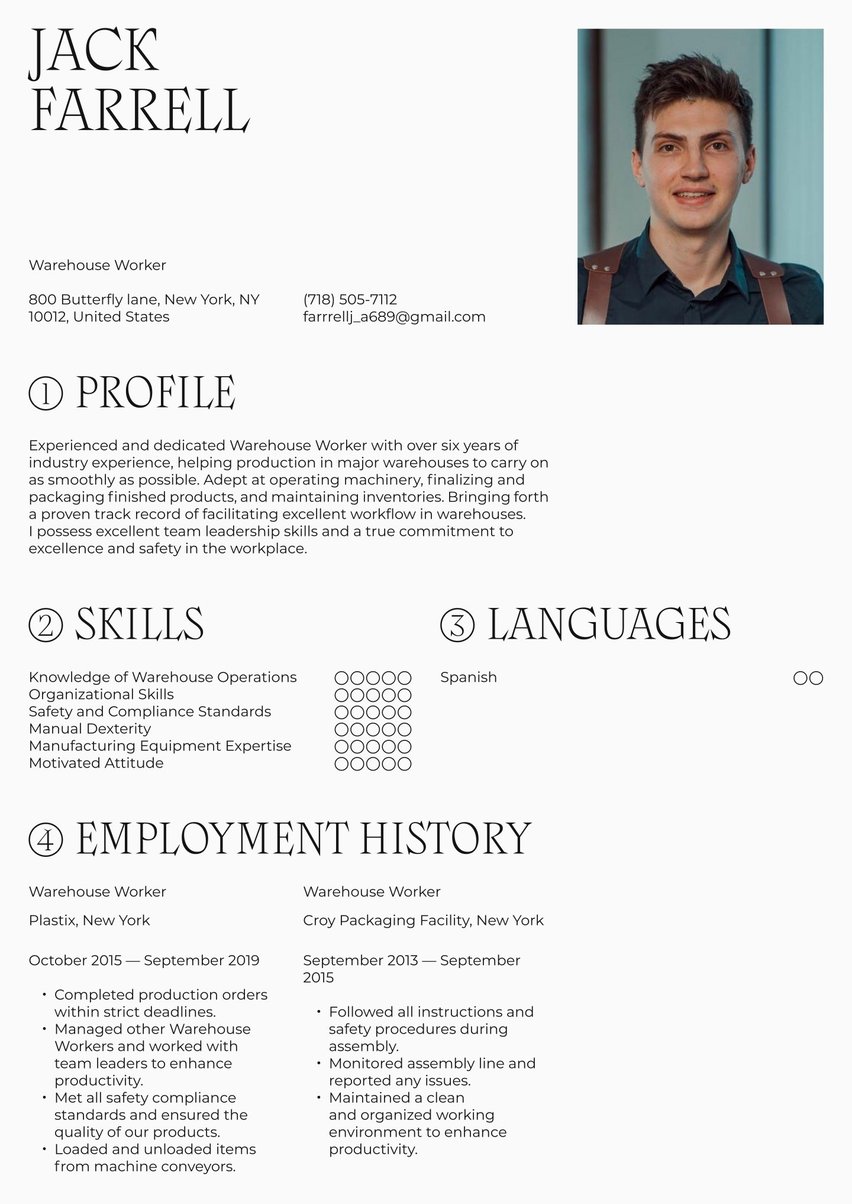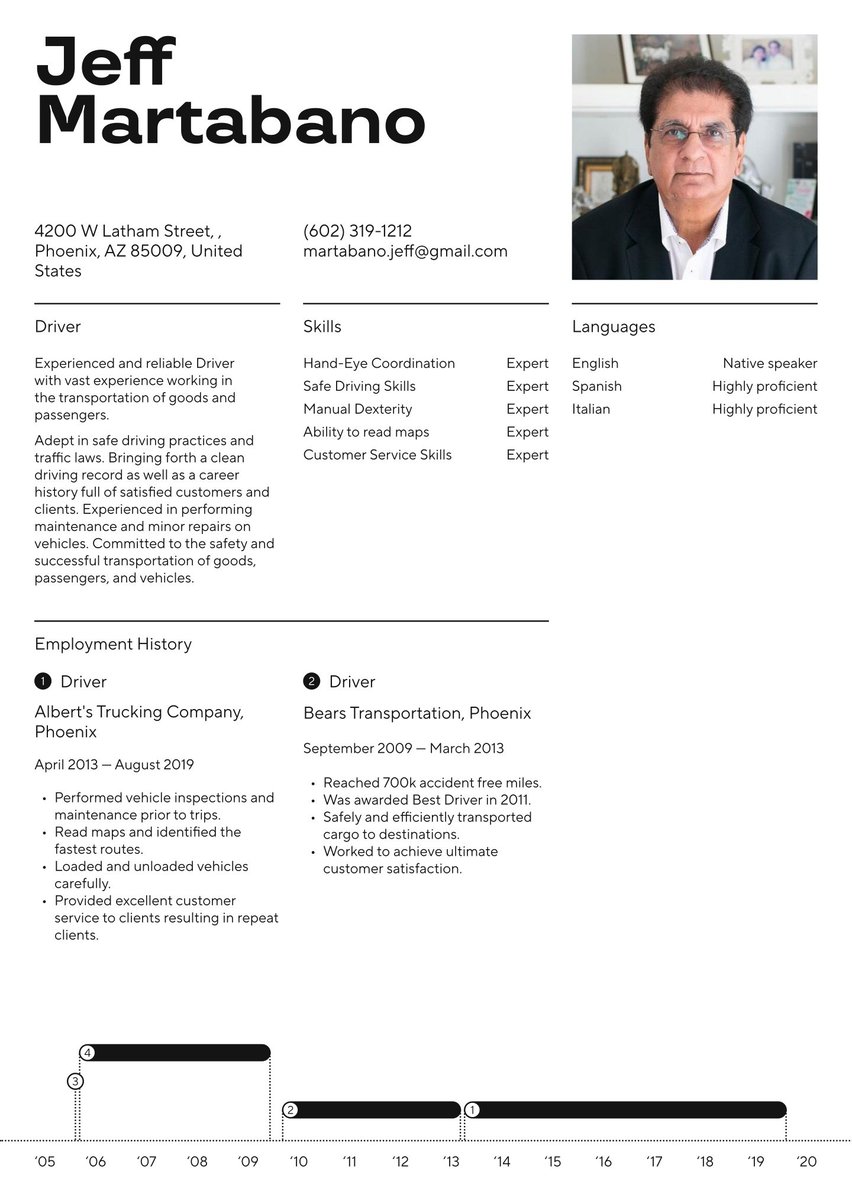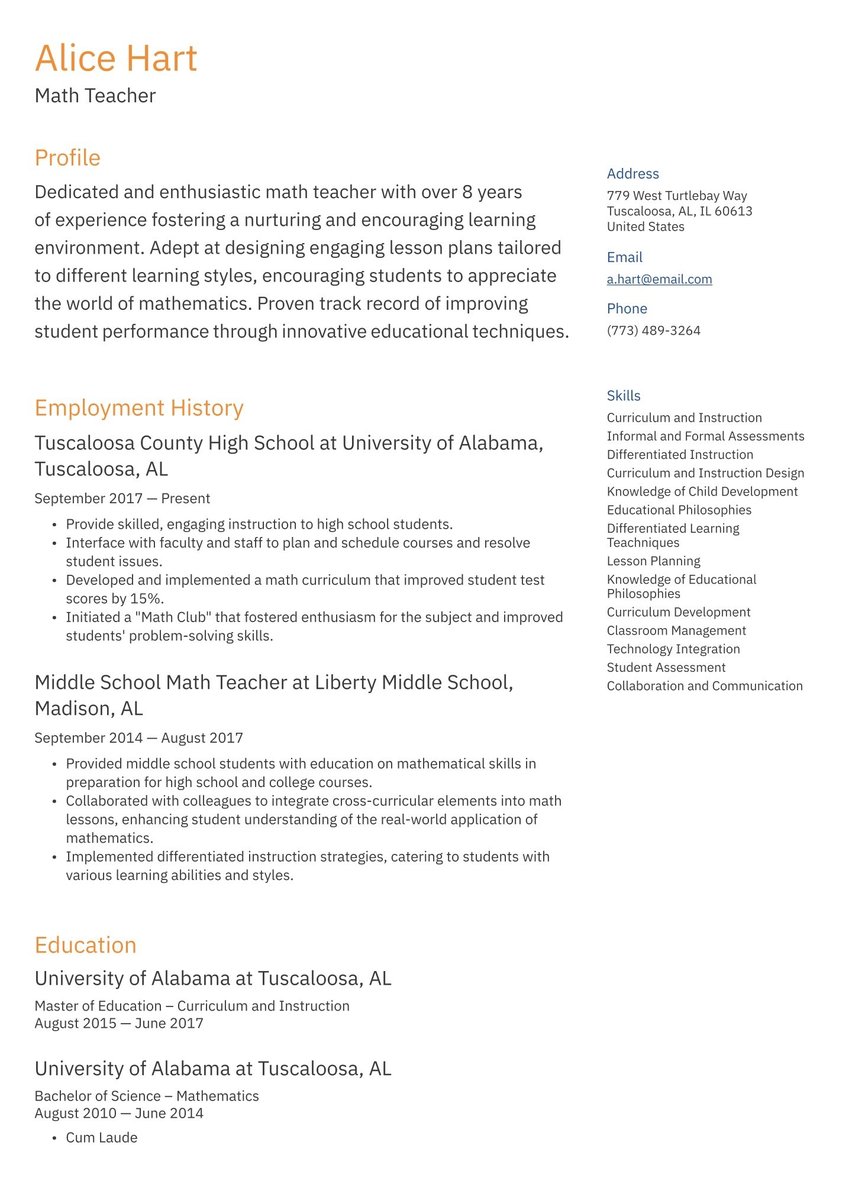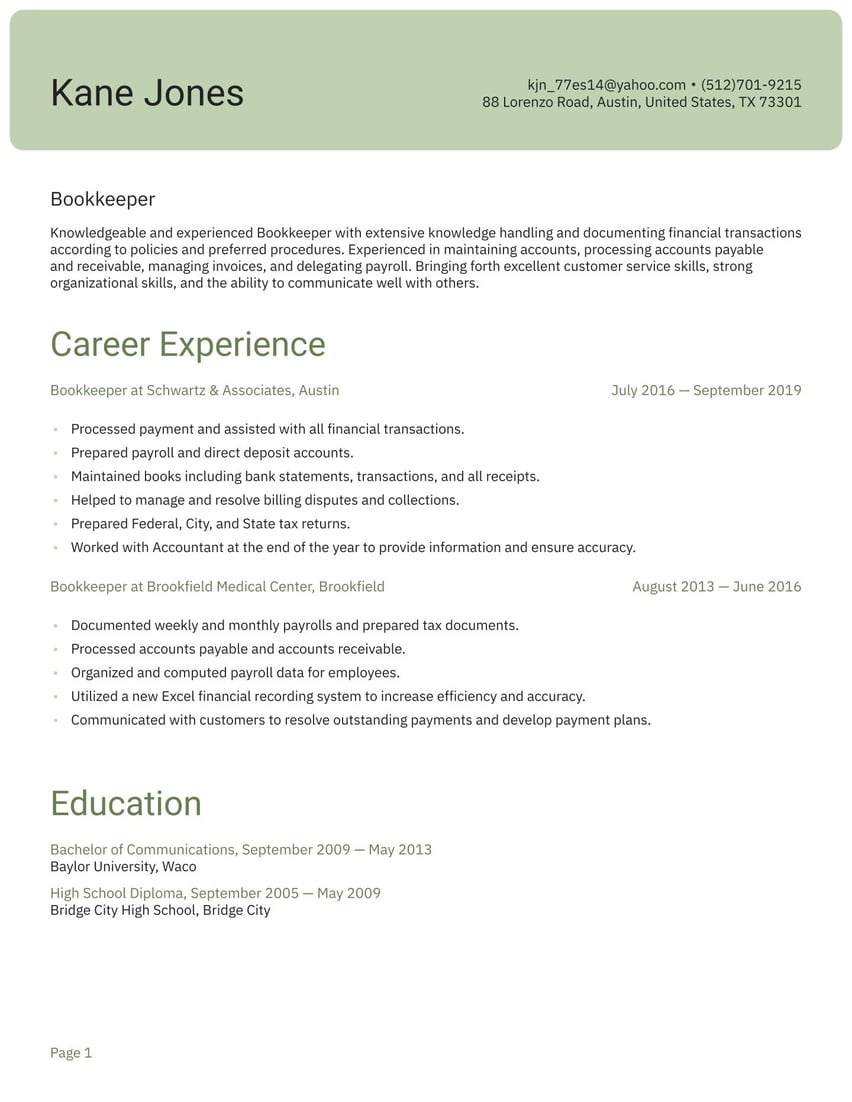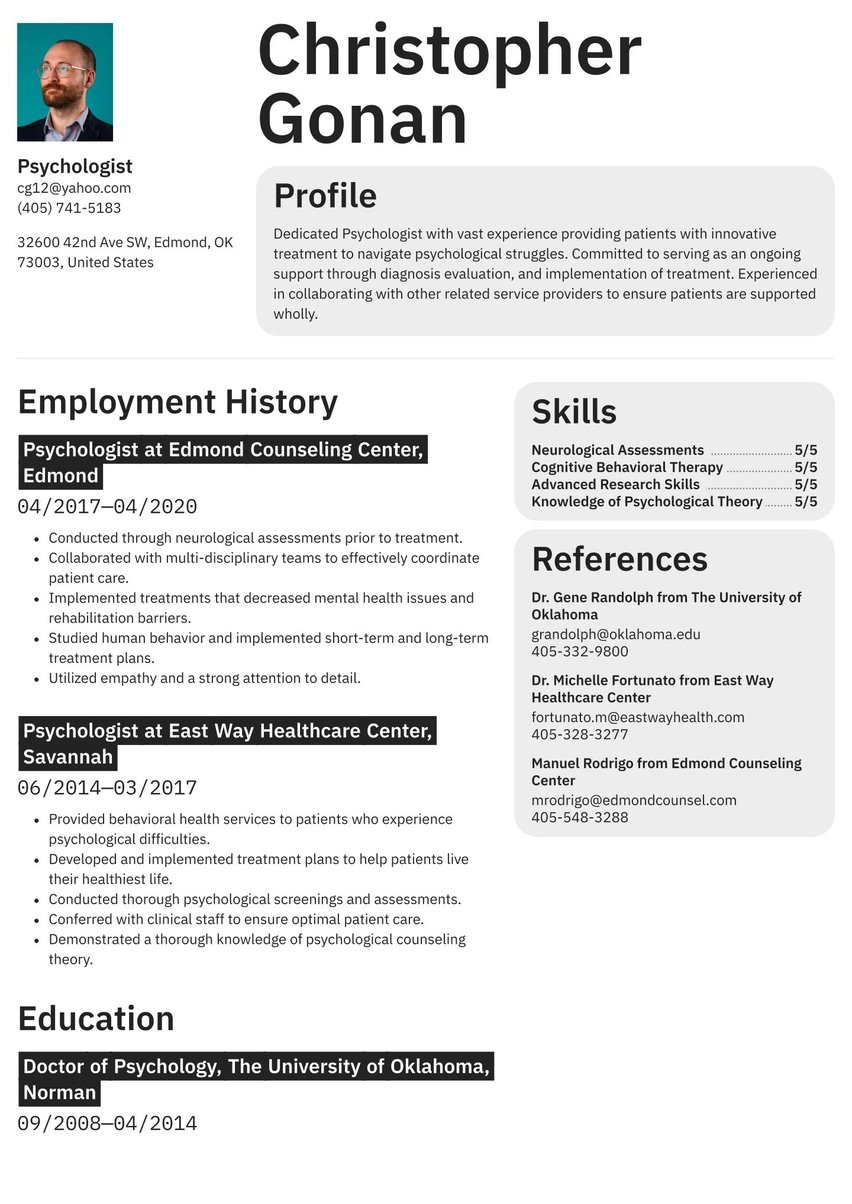Data drives business, but data has no value if it can’t be accessed and organized efficiently. The job of SQL developers is to ensure that data can be used to the advantage of their employer or client. As you begin to think forward to your next role, you need an SQL developer resume that highlights the data points within your career that make you a standout candidate.
SQL Developer resume examples by experience level
The best SQL developer resumes inform recruiters not only about your technical prowess but your ability to think creatively about how data is best organized and recalled to offer the most valuable insights. After all, your resume should be designed to get you not just any job, but the job you want. Resume.io offers expertise in all areas of job-hunting, including resume guides and resume examples for 350+ professions and, when you’re ready to create your SQL developer resume, an easy-to-use builder tool.
Within this resume guide, you will find a resume example and coverage of the following topics:
- What does an SQL developer do?
- How to write an SQL developer resume (tips and tricks)
- The best format for an SQL developer resume
- Advice on each section of your resume (summary, work history, education, skills)
- Professional resume layout and design hints.
What does an SQL developer do?
SQL, or Structured Query Language, is a standard language used to create databases. It is the job of SQL developers to plan, create and maintain those databases making sure they are stable, reliable, and perform well.
SQL developers also work to improve database function and utility, prepare documentation for any and all database applications, write complex functions according to company or client needs, regularly back up the database, manage database memory, test for bugs and fix any issues that come up.
A less than flattering acronym
The acronym CRUD describes the major functions implemented by databases:
- Create
- Read
- Update
- Delete
SQL developer job market and outlook
The market for database administrators and architects overall remains robust, with a 9 percent increase in demand expected over the next decade. The typical salary range for an SQL developer is $82,543 and $102,872, Salary.com reports.
If you want to maximize your earnings, Charlotte, NC, might be the place for you. Data shows the average base salary for SQL developers there is $139,896 or 74 percent higher than the U.S. median.
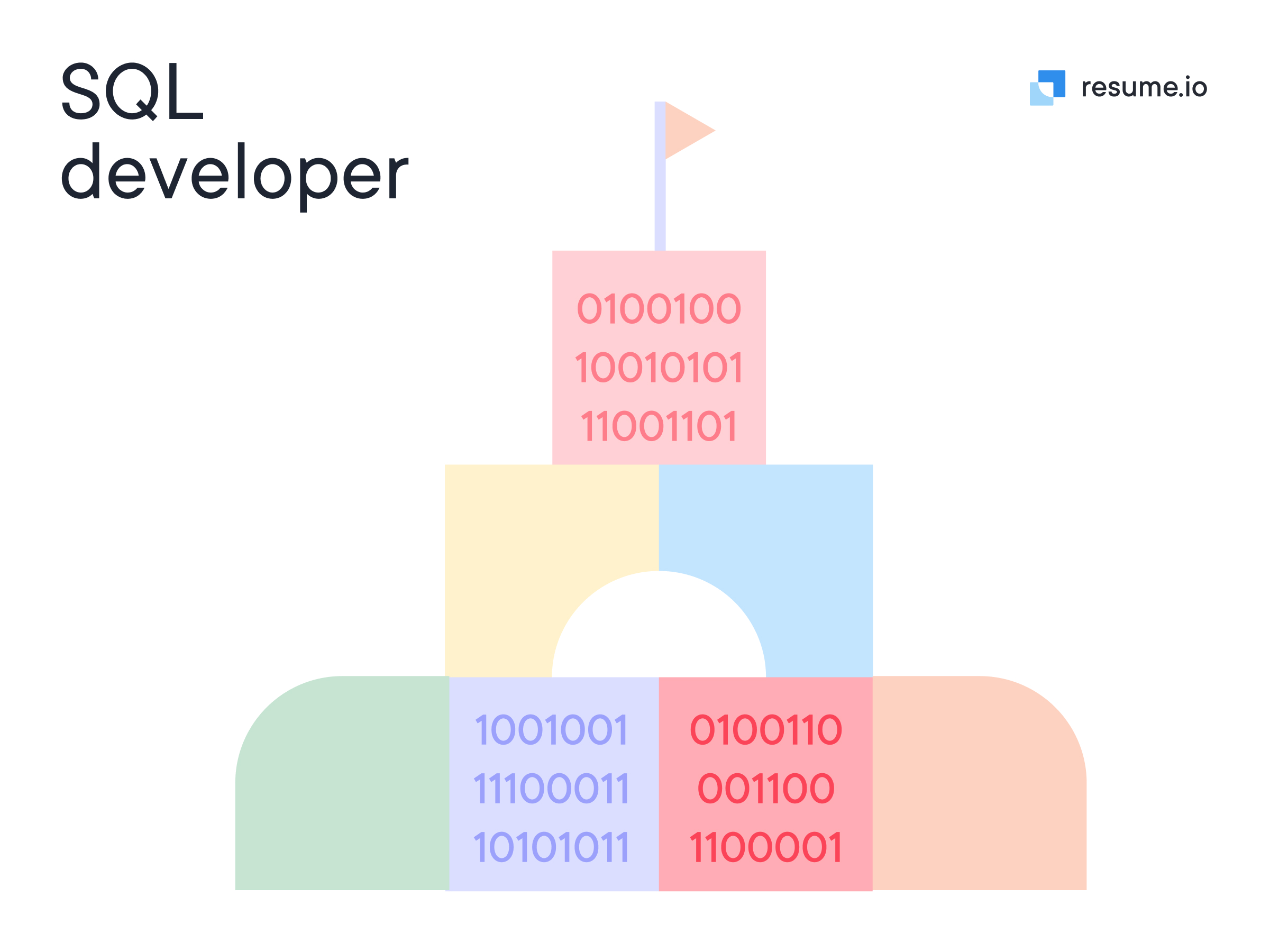
How to write an SQL developer resume
Recruiters are looking for specific data when they scan resumes and the best resumes make that data easy to find. Using common elements provides that ease. An SQL developer CV should contain the following:
- The resume header
- The resume summary (aka profile or personal statement)
- The employment history section
- The resume skills section
- The education section
Choosing the best resume format for an SQL developer
As an SQL developer, you understand the benefits of format: It allows you to recall information quickly and effortlessly. Recruiters scanning dozens, if not hundreds, of SQL developer resumes won’t spend a lot of time searching for details, so structure matters.
The most common resume format is reverse chronological order, in which your employment history section takes the bulk of your document’s real estate and jobs are listed starting with the most recent and going back. However, if you have a range of highly technical skills, you may want to expand your skills section. In that case, a hybrid resume style may suit your talents better.
The chances that you will be applying through an ATS are extremely high. Take into account the algorithms these human resources applications are based on by optimizing your SQL developer resume with keywords and phrases lifted from the job listing. While there are no guarantees, trying to boost your ranking in the ATS will help get your impressive credentials in front of a real person.
Resume header
After scanning dozens of resumes, candidates can blend together in the minds of HR personnel. An eye-catching header for your SQL developer resume can help HR employees think, “Oh, yes, I remember his candidate!”
While the design is one important aspect of the header, its main goal is to clearly state your name, title, and contact information to clear the path for scheduling an interview.
Resume summary example
Think of the summary of your SQL developer resume as a four-sentence argument for your hiring. Recruiters may not gravitate toward this section first although it sits at the top of your document, but you can be sure that if they are intrigued, they will read it.
This is the only place (aside from your cover letter) where you can explain why you’re interested in the position and focus the attention of recruiters on your greatest achievements and the arc of your career. You should also offer a glimpse of your professional personality with pointed description words that demonstrate how you approach database development.
Start out with a one-sentence overview of your career. Then add a sentence on a career highlight, followed by the reason you want the job or what makes you a great candidate. This may include a suggestion for exactly how you will enhance the company.
Technically proficient SQL Developer with more than 10 years of experience in creating database objects, designing queries, and using SSIS and SSRS. Deep understanding of database management systems, online analytical processing (OLAP), and Extract, and Transform, Load (ETL) framework, Proficient in database performance tuning, troubleshooting and resolving issues, and building reports summarizing millions of lines of data.
These related resume guides can help you get inspired to write your own SQL developer summary:
- Scrum Master resume sample
- Technical Project Manager resume sample
- Network Engineer resume sample
- IT Director resume sample
- Computer Science resume sample
- IT Project Manager resume sample
- Software Engineer resume sample
- Film and Video Editor resume sample
- Motion Graphics Artists resume sample
- Network Systems Analyst resume sample
- 3D Animator resume sample
- Software Developer resume sample
- Web Developer resume sample
- Programmer resume sample
- Data Scientist resume sample
- IT manager resume sample
- Data Analyst resume sample
Employment history sample
The employment history section of your SQL developer resume details what you have done and are doing in your career. Most important is what you have done lately (that’s why reverse-chronological order) because they are most up-to-date and higher level than your accomplishments at your first jobs.
This section forms the backbone of your resume because it shows recruiters how you’ve progressed through your career and how you enhance database functions. It also gives them an idea of your problem-solving skills and strengths. Avoid repeating functions and skills you’ve performed in more than one job. Since technology is ever-changing, highlight the achievements that show your abilities are up-to-date. No one cares that you once used COBOL (plus it dates you).
You may use the STAR method, a simple framework for writing your bullet points, to make the most of the tight space you have. Begin with the situation, explain your task, the action you took, and your results. Data and details will present a clearer picture of your accomplishments.
SQL Developer, Microsoft. Redmond, WA
June 2018 - Present
- Designed, wrote, debugged, and optimized Microsoft T-SQL queries, stored procedures, and functions.
- Used SQL Server Reporting Services (SSRS) to develop standard and ad-hoc reports aligned with user requirements.
- Tested reports, queries, and stored procedures following migration from Oracle 10g to 11i.
SQL Developer, Boeing. Bellevue, WA
September 2015 - May 2018
- Designed and executed Extract, Load, Transform (ETL) procedures to migrate data from production databases to data warehouse.
- Created and modified encrypted stored procedures with user-input parameters to simplify workflows.
- Performed reverse engineering to understand SQL code written by former team members
CV skills example
An SQL developer resume needs to demonstrate a host of technical skills such as knowledge of different programs, which is why you may want to consider an expanded skills section. But hard skills are only one category of abilities necessary to do the job well.
Along with your technical skills, make sure you include soft skills that help you interact with stakeholders and think flexibly. Communication ranks high on this list, but also consider organization, problem-solving, flexibility, and dedication.
- SQL
- T-SQL
- SQL Server
- Stored Procedures
- Queries
- MS Access
- Oracle
- PL/SQL
- SSRS
- SSIS
- ETL
A sample of relevant technical skills for your resume
- Oracle SQL Developer
- Application languages: Python, C#, or Java
- Statistical computing language R
- PHP
- Trans-act SQL
- Bash or Windows batch script
- Business intelligence tools: Microsoft SQL Server Reporting Services (SSRS) and SAP Crystal Reports
- NoSQL database systems: MongoDB and CouchDB
- Big data technologies: Hadoop and Spark
- Cloud services: Amazon AWS and Microsoft Azure
Resume education example
The education section of your SQL developer resume is the most formatted area of your application document. Although there are no formal requirements for this position, most employers require at least a bachelor’s degree in computer science, information technology, management information systems, or a related subject.
List all your degrees here, but omit your high school diploma if you have a master’s degree or significant certifications in the field. Many SQL developers also earn certified professional standing from the company whose databases they work with, such as Oracle or Microsoft. If this is the case, list those certifications within this section.
If you have the space and more than two certifications, consider adding a separate section to highlight these achievements.
Bachelor of Science in Computer Science, North Seattle College. Seattle, WA
September 2011 - June 2015
Resume layout and design
The content of your SQL developer resume is your message, but the first visual impression a recruiter will get is from your layout and design. Your layout focuses on the organization of your material and the design speaks to the fonts and colors (or lack thereof) you choose.
Show off your professionalism and organization with a crisp, uncluttered page. Follow these guidelines to help you get there or avail yourself of one of our expertly-designed and HR-vetted resume templates to speed your entry into the job market.
- Use ragged right, not justified text. Justified text spreads out words – and sometimes letters within words – to create blocks of type that run margin to margin. Not only is it harder to read, but it’s visually unappealing.
- Distinguish your section titles and contact information from your text with a contrasting font. Try a serif and sans serif or bold and light-face.
- If you choose color, use it sparingly and avoid primary or bright shades. If you shade your skills section, use a contrasting color font for the text. Readability is priority one.
- Carefully proofread for grammatical and spelling errors or for awkwardly worded phrases. Your best bet is to ask someone you trust to help with this.
Key takeaways for an SQL developer resume
- The demand for SQL developers has slackened, but is still higher than average for all careers and developers command salaries around six figures.
- Consider using a hybrid resume format that allows you to expand your skills section and show off all your technical knowledge.
- A well-written summary that shows off what you can do for your targeted employer can make all the difference in whether or not you get the interview.
- Add a certifications section if you have earned more than two technical certificates and you have the space without going over two pages.
- After compiling all your text, make sure you put equal effort into making a great visual impression with a neat, legible layout.


.jpg)

.jpg)
